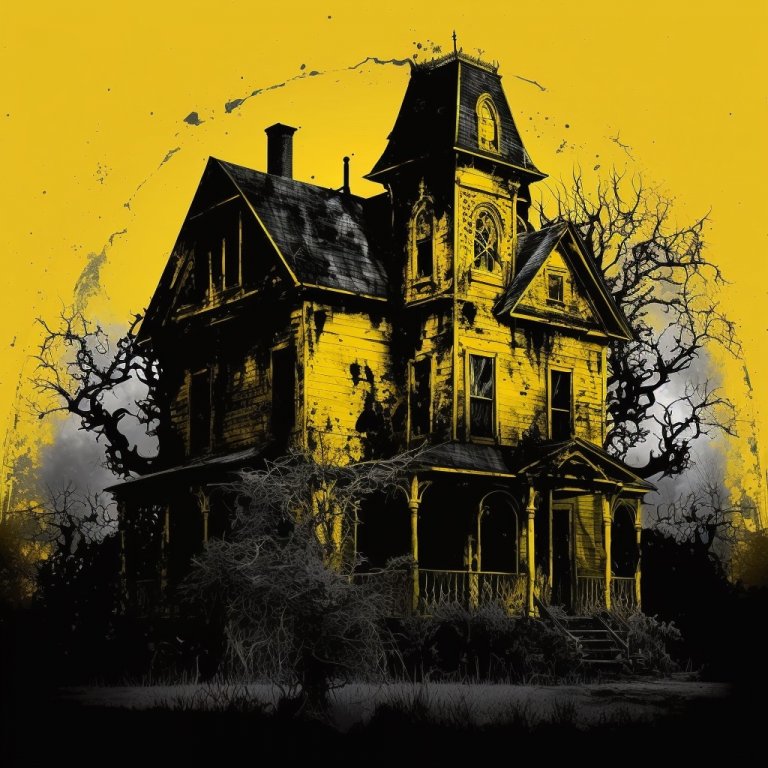The Exorcist novel — what was the terrible truth that made it sell?

The Exoricist: Curses, Lies, and Pure Baloney
What is the true story behind the Exorcist book? The Exorcist was a horror novel by William Peter Blatty published in 1971 that quickly became a best-seller. In the story, the Mesopotamian demon Pazuzu comes to America and, with the height of bad manners, possesses a young girl.
An exorcism takes place, and all goes rather dreadfully badly. People are hurt, not least their feelings — because the possessed girl says unkind things to them in a guttural voice. You know sometimes it’s not what people say to you, it’s their tone of voice? I think it’s like that.
That’s the book.
But the interesting thing is that William Peter Blatty didn’t make all this up. It was real, or at least it was a real fake.
Pazuzu Had His Good Points
Before we go further, I would just like to put the record straight about the demon Pazuzu. Pazuzu has got a bad name because Blatty made him the bad guy in The Exorcist. Sure, he is a demon, but who says all demons are bad?
Fair enough, lots of people do, but that’s plain blinkered.
We have to remember that, unlike the fictional novel, the demon Pazuzu is real, or at least the Mesopotamians really believed in him.
But if you didn’t know Pazuzu was a demon, you’d hear the name and think he was maybe a Teletubby. But he isn’t. In the effigies and inscriptions that survive of Pazuzu, he looks a bit bony, and also rather cross. Teletubbies are soft and cuddly, and only get cross when it’s time for bed.
Pazuzu came long before Christianity, so it’s unclear why he’d be scared of a cross or even understand the Latin that the priests intoned at him. In his novel, Blatty tars Pazuzu with the same brush as the Fallen Angel crew, but they are not at all the same.
Sure, they all come from a common culture: the Semitic Tribes of Judea, Babylon, and Assyria had a common belief in tribal spirits, calling them gods or demons. These tribal deities did both good and bad. Who are we to judge? Let’s face it, Jehovah is pretty stern at times.
At Petra in Jordan, their god was called Dushara. That’s a cool name. Not a Teletubby though. Maybe he has a range of designer watches or is a chef.
Pazuzu’s job in ancient Mesopotamia — from about 3500 BC — was to represent the south-west wind. This doesn’t sound like such a lousy role until you remember that the south-west wind was the one that brought storms and drought, hence Pazuzu getting a bad rep.
Pazuzu was also king of the demons of the wind, which I guess is a responsible position. I don’t know if there’s an Electoral College type thing for that role, or how many votes he got. One thing is certain — when Pazuzu got voted out, he stepped down with dignity. He was no sore loser. In fact, he saw it as an opportunity and went to America where he reputedly set up a property empire and possessed children.
You’ve seen Pazuzu Tower on Instagram, right? Lots of gold, not very tasteful, brash even, but that’s him to a t.
Certainly, Pazuzu had nothing to do with Lucifer (probably never met him as they didn’t have mutual friends), was not cast from Heaven, and never spent time in the Pit with the other bad boys.
Neither was Pazuzu sealed in a brass vessel by Solomon the Wise, the fate of many other miscellaneous Middle-Eastern demons.
And Pazuzu wasn’t all bad either. Pazuzu merchandise, such as amulets, were used in Mesopotamia to ward off other demons.
So, it seems that Blatty framed Pazuzu for the sake of his novel.
If I were Pazuzu — and to be clear, I don’t represent him or his views — I would advise him to take legal action. But maybe he just cursed them.
That maybe explains some things.
The last thing I want to say about Pazuzu is that the Fields of the Nephilim did a great song about him called ‘Pazuzu (Black Rain)’ which I used to play in my car really loud.
The Exorcist Book
In the nove by William Blatty: The Exorcist, the victim possessed by Pazuzu is a young girl called Regan MacNeil, living with her actress mother Chris MacNeil in Georgetown, Washington DC.
Young Regan gets possessed by Pazuzu, then does all sorts of nasty things, uses bad language a girl of her age shouldn’t even know, swivels her head, and is rude and violent to the priests. She also vomits and urinates inappropriately.
In the book, one priest dies of a heart attack mid-exorcism and leaves the job to the priest with shaky faith.
This guy, a Father Karras, rises to the challenge and in the end proves his faith by taking Pazuzu unto himself and jumping out of the window to his own death, thus saving the child.
I should say I enjoyed the book. I think it’s well written, but I never saw the film because I was too scared.
The Exorcist Movie
Blatty’s novel was so successful that it was adapted into a Hollywood movie, only two years after its publication, in 1973. Blatty wrote the screenplay. The Exorcist movie was a block buster. Of course that was helped the magnificent soundtrack by Mike Oldfield from his album Tubular Bells.
The BBC did a radio version in 2014 in two parts, and there was a stage adaptation put on in Los Angeles in 2012 and then in Birmingham, England in 2016.
All of these productions were reputedly cursed.
I made that up. But as everyone is making stuff up in this story, I figured I could too.
The Real Exorcism
Blatty says he heard about the real exorcism when he was at the University of Georgetown in 1950. it took place in 1948–1949 at Mount Rainier, Maryland.
The subject of the exorcism was local boy Roland Edwin Hunkeler. Hunkeler’s name wasn’t known for a long time, and it took an investigative journalist to dig out the details.
The story of Roland Edwin Hunkeler goes like this:
Roland Hunkler was 14 at the time of these events, so he was born in about 1935. He had a Lutheran Evangelical mother and a non-practicing Catholic father. They lived with the mother’s mother who spoke only German and was fanatically religious.
After the First World War and the Spanish Flu Pandemic, there was an explosion in Spiritualism and seances across the Western world as people sought comfort for their losses and some reassurance that death was not the end. This boom in Spiritualism lingered into the 1940s and 1950s. Most of this seeking was harmless and helpful to those who believed in it, but it did have a darker side, as we will see.
Roland’s grandmother and his Aunt Harriet (also known as Aunt Tillie) were very keen on Spiritualism. It was Aunt Harriet who first introduced Roland to the Ouija Board. According to her diary; this was on 26 January 1949.
Roland was an only child. We don’t know if he did Ouija in the presence of his aunt, or whether he was allowed to play with the Ouija Board when he was alone. Don’t do this.
Aunt Harriet died a few weeks after giving him the Ouija Board when she was only 54. A spooky coincidence, eh?
The Ouija Board doesn’t play a significant part in the story, but people mention it because it’s a scary prop. Is this how Roland let the demon in?
Scared now, aren’t you?
Journalist Mark Opsasnick found an old school-mate of Roland’s: calling him a school friend is stretching it. He didn’t like Roland one bit.
This guy, who knew Roland at school, said that Roland was sadistic and mean and he thought Roland was spoiled. He was violent to people and animals. Roland had a mean dog he’d adopted, and he used to sic it on people just for the lulz.
He’d call them over to his house on the pretext he wanted them around to play, lock them in the basement, and set the dog on them.
The same contemporary says that one time in class at Bladensburg Junior High, Roland began to rock violently, shaking the desk with him.
When the teacher told him not to do it, Roland yelled: “I’m not doing it”.
Our witness recalls Roland being taken out of class, and he was away for some months.
That’s when it all began.
Or did it?
It Begins
In the days before Aunt Harriet died, strange noises were already being heard in the Hunkeler house: scratchings from beneath the floorboards and a weird dripping noise.
The grandmother’s painting of Jesus rattled on the wall. The scratching noises went on from 7 pm prompt until midnight, every night for ten days.
The family initially put it down to rats in the walls, but if so, then these rats could tell the time and were pretty considerate in not keeping the family up after midnight.
The family lived at that time at Mount Rainier in Maryland, but they had relatives around St. Louis, and Aunt Harriet was ill with multiple sclerosis in hospital in St. Louis hospital.
The day Aunt Harriet died, her mother, Ronald’s grandmother, was thrown back by blasts of air and three knocks rang out through their house.
Grandmother, a believer in Spiritualism as previously noted, asked for Harriet to confirm it was really her by knocking four times. Four knocks rapped out from nowhere. That seemed to clinch it: it was Aunt Harriet returned.
Weird things continued to happen in the house and, ultimately, the spirit of Aunt Harriet was never held responsible for the possession.
Responsibility for the weirdness shifts away from her onto Old Nick himself.
That is perhaps a plot hole in this tale.
Maybe the newly created ghost of Aunt Harriet thought this particular haunting was above her pay grade (she was only newly qualified after all) and handed it up, or her Boss cherry-picked the assignment because it looked like fun.
Or it’s made up. That might be it.
The Lutheran Intervention
As the supernatural occurrences continued, the family called in their Lutheran pastor, Luther Miles Schulz.
Pastor Schulz had an interest in parapsychology and is said to have heard the noises and seen Ronald’s bed vibrate and his chair tip over. Schulz wrote some anonymous reports about the exorcism a few years later which got printed in a local newspaper and whipped up interest in the case.
Schulz even called in the famous parapsychologist J B Rhine, who didn’t see anything unusual and closed the case.
About a month after Harriet’s death, marks came up on Ronald’s body, apparently spontaneously, looking as if some creature’s claws had scratched him. Or possibly he’d scratched himself, though that isn’t particularly demonic. It could have been ringworm.
As things escalated, Pastor Schulz then took Ronald to the psychiatric unit at the University of Maryland for investigation.
Schulz then ducked out and told the family to seek help from a Catholic priest. The Catholic Church has all the best rituals, after all.
The local Jesuits snapped it up, and the priests who visited Roland at home saw the bed shaking as if with an inner power, objects flying around, and the boy speaking in a demonic guttural voice. It has been claimed that Roland in this possessed state couldn’t bear sacred Christian symbols.
Father Edward Hughes from Mount Rainier deployed the Church’s traditional remedies: blessed candles, holy water, and prayer. In return, Ronald spat out blasphemous curses at Fr Hughes as the poor priest went about his work. You’ve had customers like that. Me too.
It’s said that Fr Hughes saw telekinetic movements of his telephone back in his office after he came back from seeing Roland. Alarmed, Hughes called up the Cardinal and formally requested exorcism. Did he do it on the same phone, I wonder? Straight after? I would have been a bit scared and used the one next door.
The Exorcisms
By the beginning of March 1949, Ronald was admitted to the psychiatric unit at Georgetown University Hospital, where the first formal exorcism took place.
This was a Catholic hospital, but even so, it must have been unusual for exorcisms to be conducted in a psychiatric ward. Certainly, if one had been suggested on one of the wards I worked on, eyebrows would have been raised.
Roland was exorcised there several times. During the ritual, Roland slipped free of restraint, broke off a bedspring, and slashed the priest’s arm with it. The little monkey.
Roland must have been discharged because by the middle of March that year, the family moved with Ronald to a relative’s house in Normandy, St. Louis.
There he comes under a different priest there who is also said to have observed scratches on the boy’s body and the mattress rattling.
During an exorcism at the house in Normandy, the priest put a crucifix under Ronald’s pillow and read out prayers. After everyone but Ronald left the room, a loud noise was heard, a bookcase had moved, a bench was overturned, and the crucifix had been taken out from under the pillow and moved away. I don’t know why anyone thought this was supernatural.
As the exorcisms continued, Ronald is said to have kept on spitting and swearing at the priests, muttered in Latin, and the word ‘Satan’ is said to have appeared on his chest written in scratches.
However, when interviewed later, Fr Halloran denies he saw the scratches spelling any words; they were just scratches. I still think it could have been ringworm, or maybe scabies.
Ronald became violent and was moved to the rectory of the St Francis Xavier Church where the exorcisms continued. He was too much for them to handle there and was admitted to the psychiatric ward at the Alexian Brothers Hospital in St. Louis.
The exorcisms continued, and on 1 April 1949, Ronald was baptized Catholic.
However, this did not teach him proper reverence for priests as he became agitated on the train back to Maryland and kicked Father Bowdern in the balls.
This kind of thing is disrespectful of the clergy but does not categorically mean he was possessed by a demon.
For example, Michael Long kicked me in the balls when we were 11. He was a bad little bastard but he wasn’t possessed.
Later Roland was taken to live at a Jesuit retreat by the Mississippi. He tried to kill himself by jumping off a cliff into the river but was restrained. He went back to the psychiatric unit.
After Easter that year on 18 April 1949, Ronald spoke as if he was St. Michael and bade all the demons depart, which they promptly did.
He had a vision of St. Michael, felt it was all over, and twelve days later, went back to school.
These days they would give him a phased return, but I guess in 1949 it was straight back to class.
There were no further outbursts and no further trouble.
What Became of Roland Hunkeler?
As mentioned earlier, Hunkeler re-entered the eighth grade at Bladensburg Junior High for the 1949–50 school year. For high school, from the fall of 1950 until June 1954, he attended Gonzaga High School in Washington, D.C.
Some sources say that he worked for NASA and had three children.
He was fined in Maryland in 2006 for a seatbelt violation but appeared to have lived a blameless life, claiming no memory of the events. He must be retired now, or even dead.
Did It Really Happen?
There are church records that show these ceremonies did take place. That is not in dispute. But what was actually going on is up for debate.
One of the priests, Fr William S. Bowdern, kept a journal.
When interviewed, he played down some of the wilder reports. Bowdern said the bed did move, but it was on rollers. He did see a bottle move on its own, and he also saw marks on Roland’s skin but denies they spelled out any letters. He denies that Roland vomited or urinated.
Fr Halloran admitted that there was no definitive proof that this was an actual possession case, and he turns over the ideas that maybe the boy was mentally ill, or had even put it on.
The Curse of The Exorcist
The film, The Exorcist, was said to be cursed. When they began to shoot the movie, the set burned down. A bird flew into a fuse box. It all burned down apart from that part of the stage where they filmed the actual exorcism scenes. Some people make something of that.
The fire set back the film by a year and made shooting it a long-drawn-out ordeal for the cast and the crew.
The actors, Irishman Jack MacGowran, and Greek Vasiliki Maliaros, played characters in the film who died. Then after the film finished shooting, they died. MacGowran died in January 1973, and Maliaros in February 1973, but he was 89.
The film was released in December 1973, and I don’t know when shooting finished, but a year earlier sounds reasonable.
Also, actors Linda Blair lost her grandfather, and Max von Sydow’s brother died while they were filming. Again, I’m not massively spooked by this. It’s sad for them, but not unusual for this kind of thing to happen.
The son of actor Jason Miller, who played the priest with the shaky faith who jumps out of the window had an accident on his motorbike and was nearly killed. Like, nearly killed.
During filming, the possessed child threw her mother to the ground, injuring actress Ellen Burstyn. Linda herself was injured when some rigging broke and threw her out of bed. Okay.
The film was released on Boxing Day, 1973, and that day there was a storm, and a lightning bolt struck a church opposite one cinema in Rome. You can’t pay for that kind of publicity. Well, you can, but if you get found out, you go to jail for arson.
It is known that Warner Brothers who released the film deliberately stoked the curse story to generate additional sales.
U.S. Evangelical Preacher Billy Graham claimed that the film itself was evil. He meant the celluloid but didn’t specify if it was just the master or whether the evil was passed on to the film copies. His intervention certainly sold a few more tickets. Maybe he had shares? It would make sense; he was in the same line of work after all.
Stretching the curse more than a little in time, space, and connection, in 1987, the son of Mercedes McCambridge, who played the demonic voice of Pazuzu, murdered his wife and children before committing suicide.
My Explanation
It was all made up.
I do think that Roland Hunkeler was a very naughty boy who played around with those priests, getting them excited about wars in Heaven. He shouldn’t have spat at them, shouldn’t have sworn at them, and shouldn’t have kicked that priest in the nuts.
With the benefit of hindsight, this all looks like a story put together by click-bait journalists in those articles that have a million ads that slow your browser down with pictures of women in tight dresses and gifs of three-headed sheep selling life insurance.
I wouldn’t buy life insurance from a sheep, but I think Tinky-wink, Dipsy, Lah-Lah, Po, and Pazuzu has a real ring to it.
I discuss a more modern piece of supernatural Americana with media tie-ins here: Skinwalker ranch



